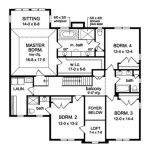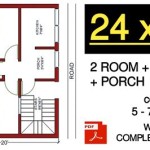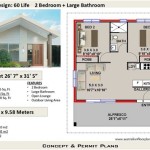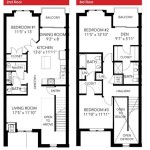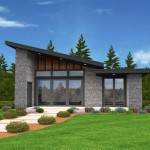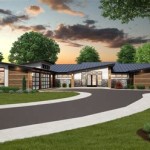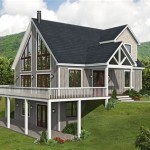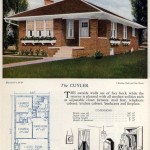House Plans for Cottages with Wrap Around Porch: A Comprehensive Guide
The allure of a cottage, especially one adorned with a wrap-around porch, is undeniable. It evokes images of tranquil living, leisurely afternoons spent outdoors, and a connection with nature. Choosing the right house plan for such a cottage is a crucial step in realizing this idyllic vision. This article will delve into the considerations and elements essential for selecting appropriate house plans for cottages featuring wrap-around porches, providing a comprehensive guide to navigate the design process.
House plans for cottages with wrap-around porches need to accurately reflect the desired aesthetics, functional requirements, and budget constraints of the homeowner. A well-executed plan integrates the porch seamlessly into the overall design, making it an integral part of the living space rather than a mere afterthought. There are multiple design styles, from traditional to modern interpretations, each presenting unique challenges and opportunities. The selection process requires a systematic approach, considering factors such as site orientation, material selection, and energy efficiency.
Key Considerations for Wrap-Around Porch Design
The wrap-around porch is more than just an architectural feature; it's an extension of the living space. Therefore, several key considerations should guide its design.
Firstly, the orientation of the porch is critical. The placement of the porch concerning the sun’s path will drastically affect its usability throughout the day and year. A south-facing porch will receive the most sunlight, while a north-facing porch will offer more shade. East-facing porches are ideal for morning sun, and west-facing porches are best for evening enjoyment. Understanding the local climate and solar patterns is essential to maximize the comfort and functionality of the porch.
Secondly, the size and shape of the porch should be proportionate to the cottage itself. An overly large porch can overwhelm a small cottage, while a too-small porch might feel cramped and unusable. The shape of the porch can also vary, from a simple rectangular design to a more complex L-shaped or U-shaped configuration. The chosen shape should complement the cottage’s architecture and maximize views and outdoor space.
Thirdly, accessibility is a significant factor. The porch should be easily accessible from multiple points within the cottage, such as the living room, kitchen, and bedrooms. Thoughtful consideration should be given to the location of doors and pathways leading onto the porch. Additionally, the porch should be accessible to individuals with mobility challenges, incorporating ramps or other modifications as needed. These accommodations ensure inclusivity and cater to a wider range of potential residents and guests.
Fourthly, the materials used for the porch's construction need to be durable and weather-resistant. Common materials include wood, composite decking, and concrete. Each material offers different aesthetic qualities and maintenance requirements. Wood offers a classic and natural look but requires regular sealing and staining to prevent rot and decay. Composite decking is a low-maintenance alternative that resists weathering and insect damage. Concrete is durable and versatile, offering various finishing options such as staining and stamping. The selection of materials should align with the overall design of the cottage and the homeowner's preferences.
Finally, the roof covering the porch is also an essential design element. Typically, the porch roof is an extension of the main roof of the cottage, creating a cohesive and unified appearance. The roof can be supported by posts or columns, which can be decorative or functional. The pitch of the roof should be adequate to shed rainwater effectively, and gutters should be installed to prevent water damage. The roof material should match the main roof of the cottage to achieve a consistent and aesthetically pleasing look.
Interior Layout Considerations for Cottage Design
The interior layout of a cottage with a wrap-around porch should complement the outdoor living space. The design should promote a seamless transition between the interior and exterior, making the porch an integral part of the overall living area. Several factors need consideration when designing the interior layout.
Firstly, the location of the main living areas, such as the living room and kitchen, should be strategically positioned to maximize their connection with the porch. Large windows and doors should be incorporated to provide ample natural light and views of the surrounding landscape. The living room can open directly onto the porch, creating a spacious and inviting area for relaxation and entertainment. The kitchen can also be designed with access to the porch, making it convenient for outdoor dining and grilling.
Secondly, the placement of bedrooms should consider privacy and noise levels. While some bedrooms might benefit from direct access to the porch, others might be better located away from high-traffic areas to ensure a quiet and restful environment. The master bedroom, in particular, might benefit from a private section of the porch, offering a secluded outdoor retreat. Thoughtful space planning is crucial to balance the desire for outdoor access with the need for privacy and tranquility.
Thirdly, storage space is often a concern in smaller cottages. Efficient storage solutions should be integrated into the design to maximize space and minimize clutter. Built-in cabinets, shelves, and closets can help to organize belongings and keep the cottage tidy. The porch can also be used for storage, with options such as built-in benches with storage compartments or outdoor storage sheds. Optimizing storage is crucial in maintaining a comfortable and functional living environment, especially within potentially limited space.
Fourthly, the flow between different areas of the cottage should be carefully considered. The design should promote easy movement between the living room, kitchen, bedrooms, and porch. Hallways should be wide and well-lit, and doorways should be positioned to avoid creating bottlenecks. An open floor plan can create a sense of spaciousness and improve the flow of traffic throughout the cottage.
Fifthly, the style and decor of the interior should complement the overall design of the cottage and the porch. Natural materials, such as wood and stone, can be used to create a warm and inviting atmosphere. Light colors can help to brighten the interior and make it feel more spacious. The decor should reflect the homeowner's personal style and create a cohesive and harmonious look.
Energy Efficiency and Sustainability
Energy efficiency and sustainability are increasingly important considerations in house plan design. Cottages, often located in natural settings, benefit from designs that minimize environmental impact and reduce energy consumption. The integration of energy-efficient features and sustainable materials can significantly improve the long-term performance of the cottage.
Firstly, proper insulation is crucial for maintaining a comfortable indoor temperature and reducing energy consumption. The walls, roof, and floors of the cottage should be adequately insulated to prevent heat loss in the winter and heat gain in the summer. High-performance insulation materials, such as spray foam or cellulose, can provide superior thermal performance. Attention should also be given to sealing air leaks around windows, doors, and other openings to prevent drafts.
Secondly, energy-efficient windows and doors can significantly reduce energy consumption. Double-paned or triple-paned windows with low-E coatings can minimize heat transfer and reduce the need for heating and cooling. Weatherstripping around windows and doors should be properly installed to prevent air leaks. Energy-efficient doors, such as those with insulated cores, can also help to reduce energy consumption.
Thirdly, renewable energy sources, such as solar panels and wind turbines, can be integrated into the design to reduce reliance on fossil fuels. Solar panels can be installed on the roof of the cottage to generate electricity, while wind turbines can be placed in areas with sufficient wind resources. The use of renewable energy can significantly reduce the carbon footprint of the cottage and lower energy bills.
Fourthly, sustainable building materials can be used in the construction of the cottage to minimize environmental impact. Reclaimed wood, bamboo flooring, and recycled content materials are examples of sustainable building materials. These materials reduce the demand for virgin resources and minimize waste. The use of sustainable materials contributes to a healthier and more environmentally friendly building.
Fifthly, water conservation measures can be implemented to reduce water consumption. Low-flow toilets, showerheads, and faucets can significantly reduce water usage without sacrificing performance. Rainwater harvesting systems can be installed to collect rainwater for irrigation and other non-potable uses. Xeriscaping, a landscaping technique that uses drought-tolerant plants, can reduce the need for irrigation. Integrating water conservation measures helps minimize the environmental impact of the cottage and conserve valuable water resources.
Finally, proper ventilation is essential for maintaining indoor air quality and preventing moisture buildup. Natural ventilation, such as the use of operable windows and skylights, can provide fresh air and reduce the need for mechanical ventilation. Mechanical ventilation systems, such as heat recovery ventilators (HRVs) and energy recovery ventilators (ERVs), can provide controlled ventilation and improve indoor air quality. Adequate ventilation is crucial for creating a healthy and comfortable indoor environment.

Log Home With Wraparound Porch Cabin House Plans Cottage Dream

Plan 70630mk Rustic Cottage House With Wraparound Porch Plans Dream
:max_bytes(150000):strip_icc()/HOH_SL1254-d5dcd603b4e042e7852fbb2e93f2e0a5.jpg?strip=all)
13 House Plans With Wrap Around Porches

3 Bedroom Country Home Floor Plan With Wrap Around Porch 138 1002

Plan 57894 Southern Cottage With Two Bedrooms And Full Wrap Aro

Rustic Cottage House Plan Small Cabin

Country Style House Plan With Wrap Around Porch Farmhouse Plans

2 Story 4 Bedroom Rustic Waterfront Lake Cabin

Cottages Small House Plans With Big Features Blog Homeplans Com

Cottage House Plan 192 1035 3 Bedrm 1479 Sq Ft Home Theplancollection

